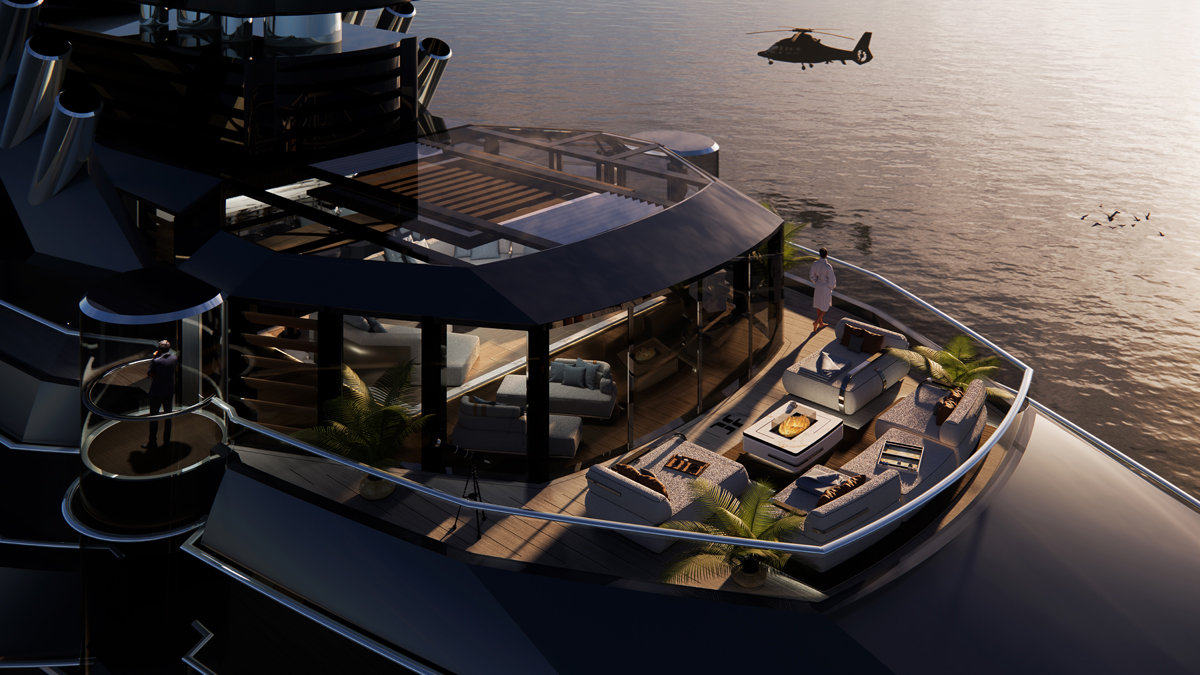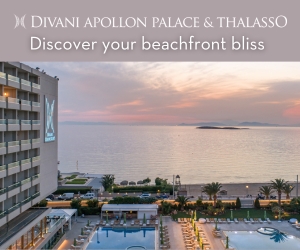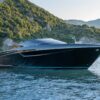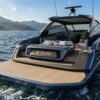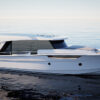For Carlo Nuvolari and Dan Lenard – co-founders of the Nuvolari Lenard design house – change is not only welcome but also something actively to be sought. Change is what drives the language of design forward, and it is also what brings form and functionality ever closer together.
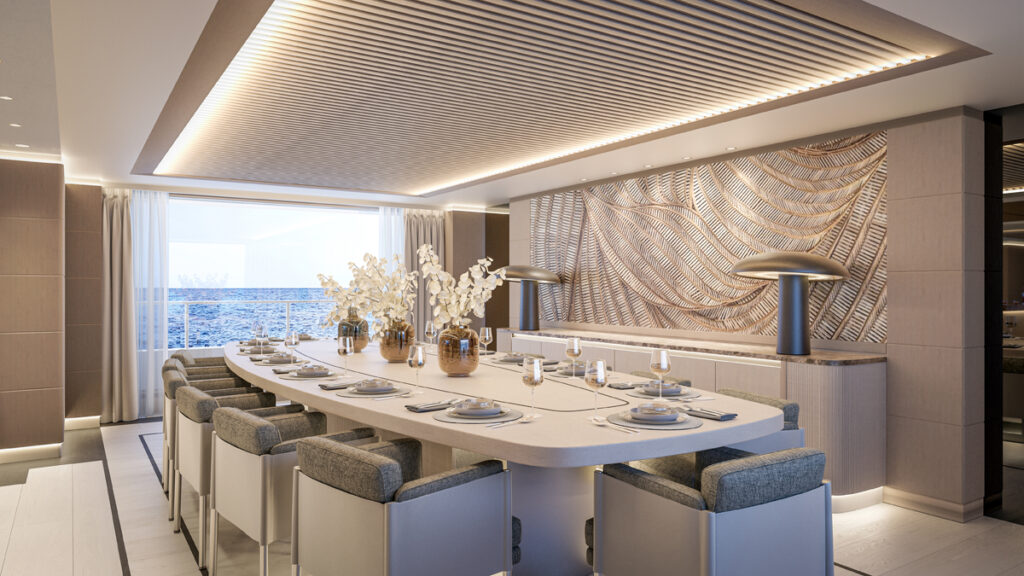
For many outside observers, the outside of a yacht is what they see and it is the flowing, sculpted lines that suggest forward design momentum. It is an area that the Nuvolari Lenard team know well, having created some of the most iconic yachts in modern times such as the 141.6-metre Nord, the 115-metre Ahpo, and the 60.3-metre Comfortably Numb, while also setting new benchmarks with innovative designs such as the 202-metre Centrefold, or the NLPlus which captures the essence of the perfect superyacht in 52 metres.
However, says Lenard, the exterior is only part of the design equation, and its relationship to the interior layout and design is intrinsic. Having recently assumed responsibility for the art direction of the studio’s interior design department, he is reinforcing the form-function interaction while at the same time reinvigorating the essence of what an interior can be. “A yacht,” he explains, “is to be conceived as a whole, and separating external design from internal design reduces the possibility of elevating the entire yacht project to a higher level – that is, to that of a work of art.”

It’s all part of that continual strive to change, to look ahead, and to rejuvenate the team’s way of designing, and it’s becoming more and more essential as owners’ own attitudes change, both in terms of style and in terms of environmental considerations. “We clearly perceive the expectations of today’s shipowners who, regardless of their age, think differently and think younger,” offers Nuvolari. “The covid pandemic marked the change to a new era – interior design in recent years has often seen appearance dominate substance and excess in the use of special (as well as expensive) materials. ”
“We want to reverse this equation,” he continues, “with a trend that will see the exaltation of true design, less formality in environments, less emphasis in decoration, and interior design focused entirely on the individual and wellbeing.”
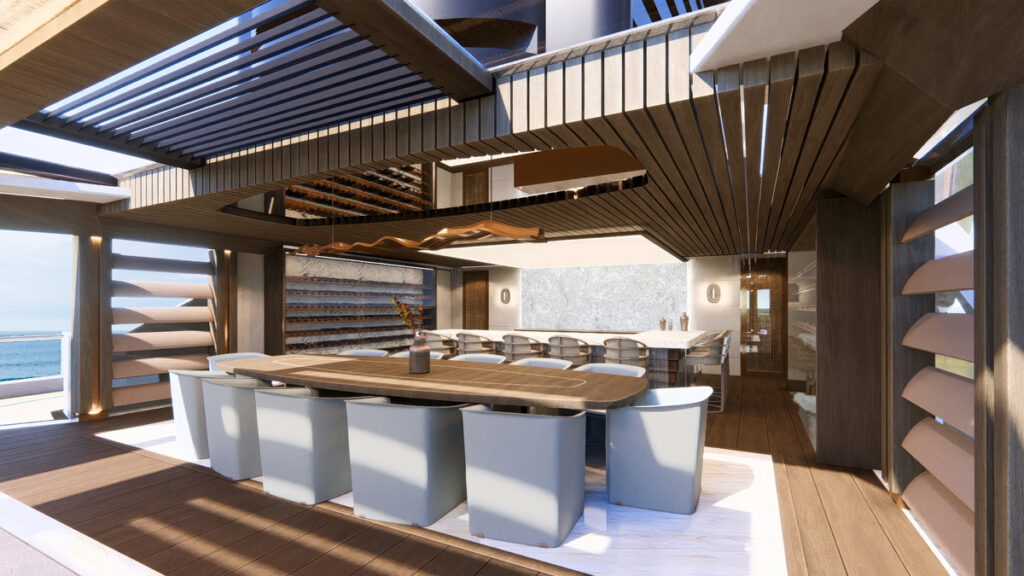
A clockwork Orangerie
To achieve this fundamental shift, the Nuvolari Lenard team are focusing in particular on two key facets – extreme attention to proportion, and the meticulous planning of the layout and the use of light. “This is where the connection with the exterior design shows itself,” Lenard explains, “because the emphasis on light influences the relationship with the yacht’s exterior design which determines the shape and position of the windows.”
An example of this forward shift to a new trend can be found in the Orangerie of the Centrefold project – a space that sits in continuity with the exteriors, dominated by the themes of light and sight, with a clean style that doesn’t exceed in formalism or unnecessary embellishment. The space is dominated by huge sweeps of glass, both wrapping the space vertically and also overhead. “It’s an interior environment of the yacht where guests are enabled to feel the emotion and sensation of being outside,” explains Lenard.
Sustainable interest
In tandem with this reconsidered approach to the interior comes another important element – the desire for greater environmental sustainability and greater customer wellbeing. It’s an aspect which forms a second driving force behind Nuvolari Lenard’s renewed interior design approach.
Nuvolari in particular has made this a focus, showing the effects of the usage of many of the materials and techniques used to build interiors, which in turn means he can offer shipowners a lot of information to clarify these aspects and help them in their choices. “Often,” he says, “we tend to consider materials as ‘sustainable’ that actually only have the appearance of being sustainable, and other times we condemn the use of other materials only because we have limited – or tradition-distorted – information.”
As an example, Nuvolari points to natural leather. “We often criticise its use, preferring synthetic leathers,” he says, “but we forget that it is a by-product of the food industry that, if not used, would have to be disposed of with a serious impact on the environment.”

Such examples are rife, and it’s why Nuvolari Lenard asks its suppliers for information and data on the origin of materials and the techniques used to produce them in order to select those with greater environmental sustainability. “Wellbeing has become one of the main expectations of shipowners,” Nuvolari adds, “so we are keen to inform them about how the use of certain materials and construction techniques has a significant impact on interior design.”
The team is taking environmental consideration further however, to include the influence of volatile organic compounds (VOC) and the release of toxic substances in interiors that persists long after the yacht is delivered. It’s important because they can impact the quality of the air breathed – it’s a much-debated issue in civil engineering but has not yet been widely addressed in yachting. Nuvolari Lenard is diligently discussing construction techniques and materials that neutralise these negative effects with interior construction companies.
By embracing change, Nuvolari Lenard is not just advancing its own design techniques, but also advancing the idea of design itself. “The success of interior design is no longer just stylistic but holistic, involving all aspects of the project – interior design, the relationship with exterior design and the knowledge and correct use of appropriate and sustainable materials and techniques,” Lenard concludes. “This collaborative and innovative process is exactly what Nuvolari Lenard has developed and follows for the realisation of its interior projects. It’s how we intend to create a new generation of iconic designs inside and out.”



